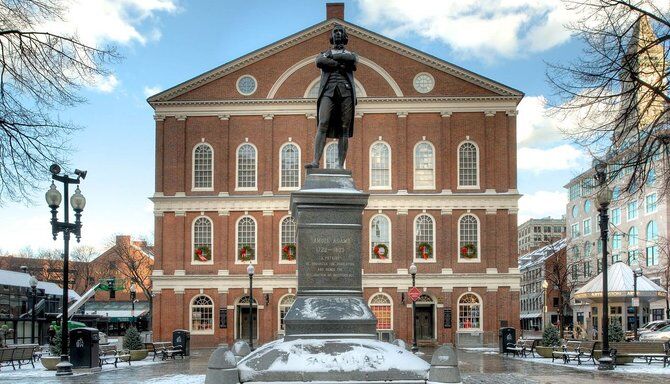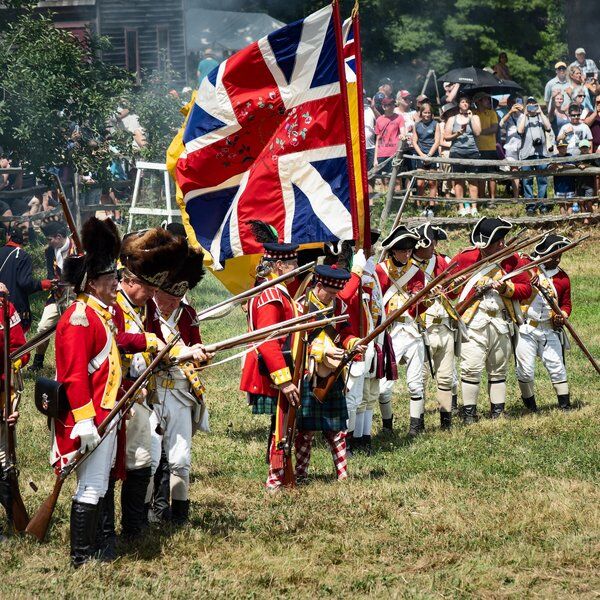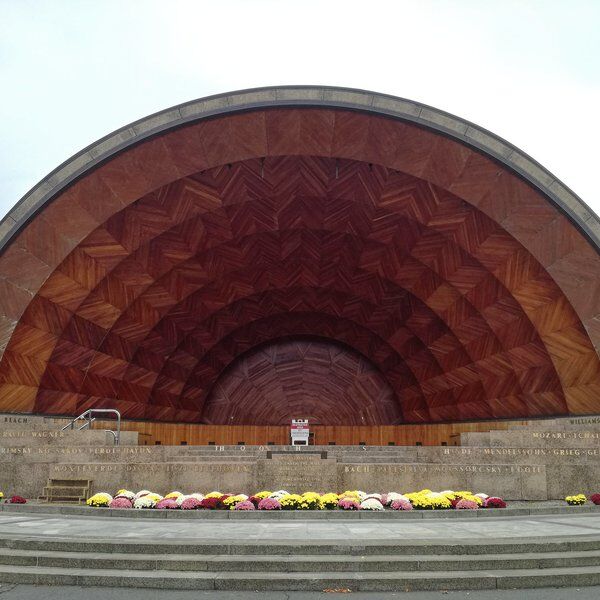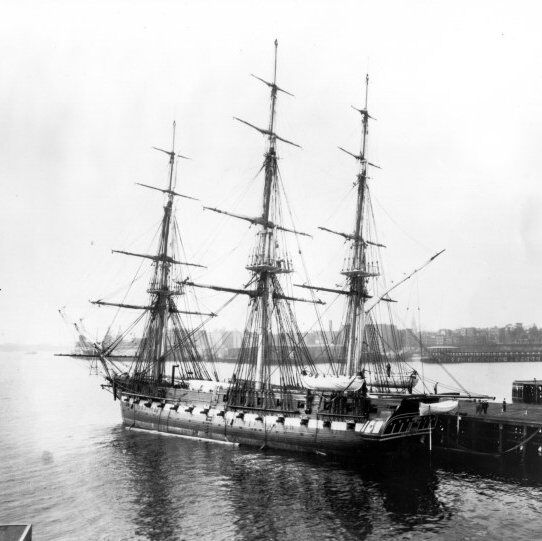Faneuil Hall Market's Origins
In 1740, slave trader Peter Faneuil proposed the building of a new market in central Boston. The city's former market had been destroyed by an angry mob three years earlier and Faneuil wanted to fund the market himself, but his proposal was nonetheless met with a lukewarm reception. People had gotten used to buying what needed off of street hawkers and door-to-door salesmen. Was a market even necessary?
In the end 367 people voted for the market and only 360 against. Designs were drawn up by John Smilbert and construction began that same year. The hall was completed and opened in 1742, a two-storey building with a marketplace on the open ground floor and an assembly room above.

Slavery and Faneuil Hall Market
Peter Faneuil was heavily involved in the trans-atlantic slave trade. His ships took people from Africa to the West Indies, where they were forced to work as slaves on plantations. The sugar and molasses that was the fruit of their labour was then taken and sold in the colonies, also by the likes of Faneuil. Faneuil Hall Market was funded by money made through these means. And the link to slavery does not end there. It is also reputed to have been the site of some of Boston's early slave auctions.
Years later, in the 1780s, this purpose was reversed when the hall became a forum for abolitionists, who wished to proclaim the evils of slavery. By then abolition had been achieved in Massachusetts, but slavery was still a problem on the national level. The speeches against it that were held at Faneuil Hall Market contributed towards its end.

The American Revolution and Faneuil Hall Market
In the years between being a site of slavers and becoming one of abolitionists the hall saw much upheaval. It was destroyed by a fire in 1761 and rebuilt a year later. It then became a gathering place for patriots who were fed up with the unjust actions of the ruling British.
In 1764 a meeting was held in the hall in protest of the Sugar Act. Subsequent meetings followed, notably in 1765, 1770 and 1773, in response to the Stamp Act, the Boston Massacre and the Tea Crisis, respectively. The last of these started a series of meetings that culminated in the famous Boston Tea Party.
These meetings were seen as dangerous by the British, so much so that in 1774 an act was passed banning them. This of course was met with yet another meeting! Samuel Adams (whose statue can be seen out front) frequently spoke at the hall, arguing for independence alongside such figures as James Otis.
However, in 1775, after the first shots of the American Revolution were fired, Faneuil Hall Market became not a place of encouraging uprising but of supressing it. The occupying British forces collected the local population's firearms there, 'for safe-keeping'. The building was then temporarily turned into a theatre.
Despite this, any hope the British had of stifling the burgeoning revolutionary spirit was in vain. In 1777, a year after the Declaration of Independence had been signed, George Washington came to the hall to toast the new nation on its first birthday.

Faneuil Hall Market Today
Since then the hall has been expanded, rebuilt and refurbished several times. It is now more than double its width and height in the 1780s, and has four storeys, the top of which contains the Ancient and Honorable Artillery Company of Massachusetts HQ and museum. Together with the nearby South, North and Quincy Markets, it makes up Boston's festival marketplace. It is a designated national historic landmark and receives approximately 18 million visitors a year.
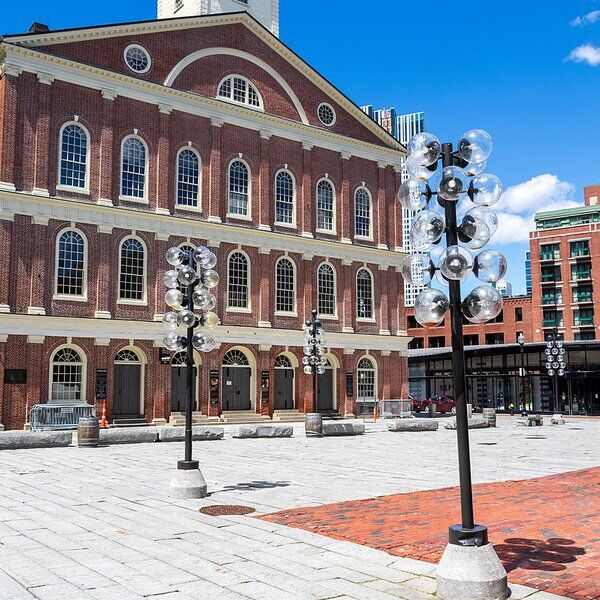
Interested in finding more places like this? Try one of our Boston Scavenger Hunts- untangle cryptic clues as a team, as you are taken on a journey to the most unique, unusual and bizarre corners of Boston and beyond!
